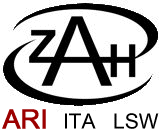Introduction to GPU Accelerated Computing SS 2017 Block Course with Exercises
| NEWS: | Block Course, July 31 - Aug. 3, 2017 .
Room changed to CIP Pool KIP INF 227, 1.401 Begin of Lecture : Monday, July 31, 10:15 a.m. our GPU lecture will start at Kirchhoff Institute (KIP) Im Neuenheimer Feld 227, CIP Pool KIP 1.401. (If you arrive more than 15 minutes late, but want to keep your place in the course it is important that you let me know in advance, otherwise I may give spaces to the waiting list). Please also notice that this course will be offered again March 26-29, 2018 (Winter Term 2017/2018). Everyone who steps down now and moves to the next March will get privileged access, guaranteed place. A group for March 2018 has been already started in the "uebungen" system. |
| Files: |
Slides of Lecture 1/2/3, July 31, Aug. 1, 2 Lecture Slides Jason Sanders complete (July 31/Aug.1) NVIDIA Slides on User API's (Aug. 1) On the Histogram Programs (Aug. 2) User Handbook kepler cluster NBODY6++ Lecture Slides of Thu Aug 3 NBODY6++ Technical Manual NBODY6++ Our Experiments Description |
| Summary: | We will learn the basic technique to use GPU (graphical processing units, graphics cards) for numerical accelered computing at the example of CUDA - an extension of C. |
| Enrolment: | Please use this link: https://uebungen.physik.uni-heidelberg.de/v/749 |
| Lecturer: |
Prof. Rainer Spurzem;
ZAH/ARI, Mönchhofstr. 12-14, 69120 Heidelberg Email: spurzem@ari.uni-heidelberg.de |
| Time and Place: | Monday - Thursday, July 31 - Aug. 3, 2017; Lecture: 10:15 - 13:00 Uhr, Exercises: 14:15 - 17:00, BOTH at CIP Pool KIP, INF 227, Room 1.401 . |
| Requirements: | Basic knowledge of a higher programming language such as C, C++,
Fortran or similar
|
| Topic: | We will learn the basic technique to use GPU (graphical processing units, graphics cards) for numerical accelered computing at the example of CUDA - an extension of the C programming language. Also some general ideas of parallel programming will be discussed. GPU accelerated parallel computing is a technique used in many areas of computational physics and astrophysics. See for example this conference with current research been done: GPU 2016 Rome . After the basic introduction one or two application examples will be presented. This is a four day block course with lectures in the morning and practical hands-on exercises in the afternoon. Topics: Parallel Computing, GPU Hardware, Elements of CUDA Language, Data Transfer, Vector and Matrix Operations, Simple Application for N-Body Problem. |
| Literature: |
CUDA by Example, of Jason Sanders and Edward Kandrot . Our course is inspired by this book
and lectures of the authors, but will cover much less details; on the other hand we will learn
about some astrophysical application, which is not in the book.
|
(Responsible for contents: Rainer Spurzem )
Contact: D. Möricke

